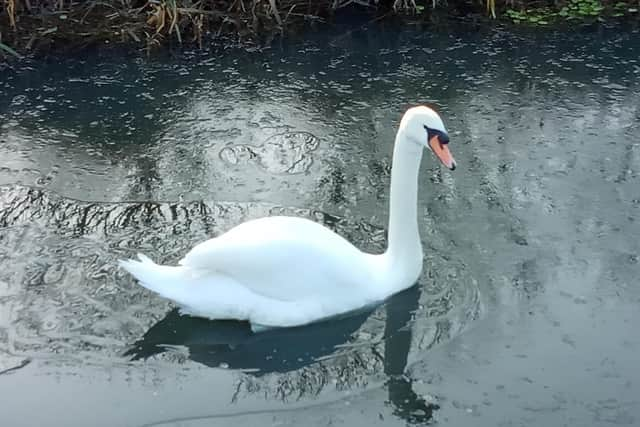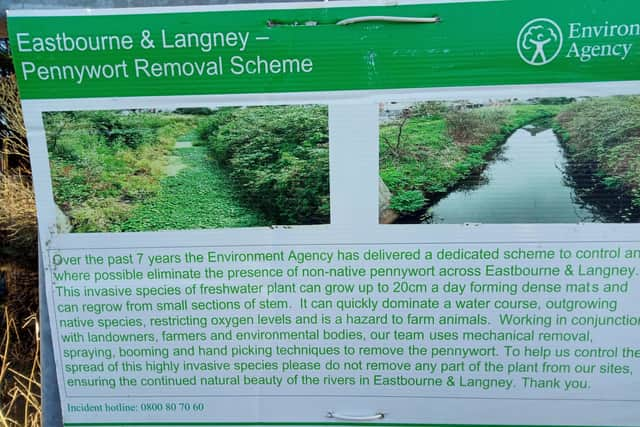Scheme to fight invasive plant species in Eastbourne receives praise
and live on Freeview channel 276
Floating pennywort, originally from America, is an invasive plant that arrived in the UK in the late 1980s and has since caused havoc in the environment.
Spreading itself across waterways, pennywort can grow up to 20cm a day and suffocates native plants and fish. The plant is difficult to control and attempts to fight the species have largely been unsuccessful.
Advertisement
Hide AdAdvertisement
Hide AdThe Environmental Agency launched the Pennywort Removal Scheme seven years ago to fight the damage to the county’s wildlife. It involves using mechanical removal, spraying, booming, and hand picking techniques to remove the plant from local areas,


An Environment Agency spokesperson said, “Floating pennywort is a fast-growing invasive species of freshwater plant. Due to its rapid growth it can quickly dominate a watercourse.
“Oxygen levels in the water often become reduced and this can result in fish deaths and impacts to wildlife.
“The plant also obstructs movements of animals and boats, restricting navigation and recreational use of watercourses. It is removed by weed cutting techniques or, where appropriate, with the use of chemicals.
Advertisement
Hide AdAdvertisement
Hide Ad“Together with our local professional partners research is ongoing into the effectiveness of all management options to control this widespread invasive species.


“Members of the public who see evidence of floating pennywort in a watercourse are encouraged to report it to the Environment Agency via our 24 hour freephone Incident Hotline on 0800 807060.”
The work done by the agency has quickly turned many of the rivers in the South East from covered with pennywort to now recording much lower levels.
Kelvin Luscombe, a local resident who took pictures of the park, said, “Pennywort, the last few years, has blighted our waterways, choking oxygen, causing a decline in wildlife. A balanced approach is essential keeping waterways clear.
Advertisement
Hide AdAdvertisement
Hide Ad“The Environment Agency clearing these waterways can only be a good thing. I did notice some rubbish plastic bottles and cans that were left at the site on the banks, and would be good if they had removed these.
“Wildlife has definitely returned to the cleared waterways, restored biodiversity to nature, as in ducks, swans, water voles hopefully minnows.
“For the future, its imperative works are maintained, waterways not left to the accumulation of pennywort. A program of future works maintenance in order for the least disruption to the wildlife. Testing of water quality made to the public.
“Big thank you to the Environment Agency for the clearance scheme.”
Advertisement
Hide AdAdvertisement
Hide AdThe agency explained that there are various control and disposal operations available, through both physical and chemical methods.
Physically, floating pennywort can be cut with weed cutting buckets or from boats and should be done from May to October. The entire plant, along with all its underwater stems and root systems, will need to be removed to ensure that it doesn’t spread further.